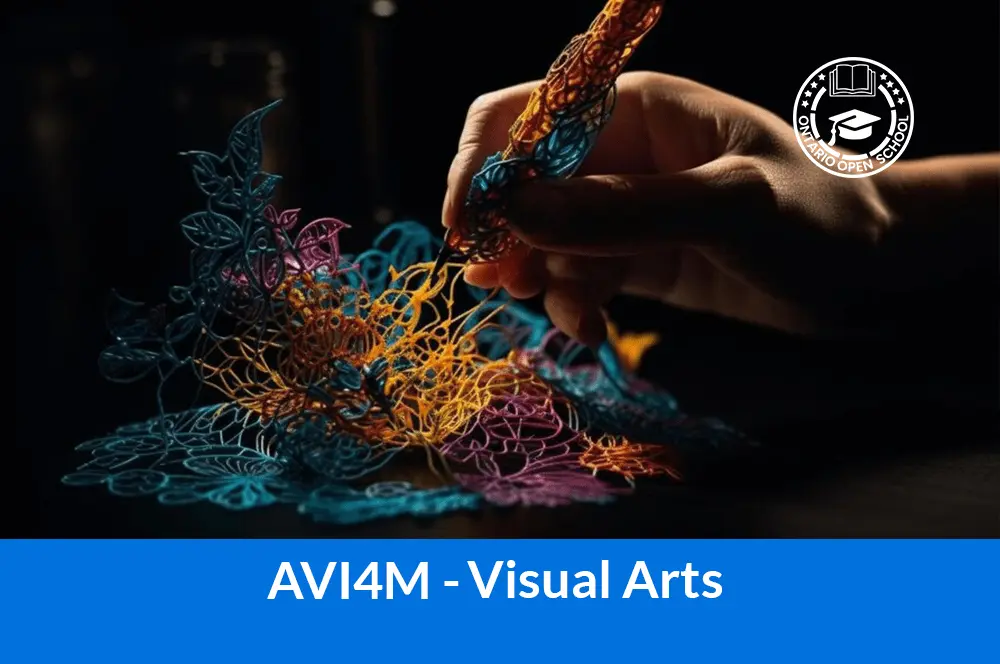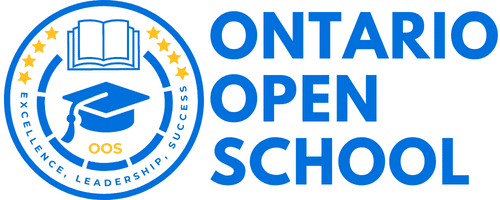- info@ontarioopenschool.com
- 647-494-4499
-
Unit 100 - 29 Gervais Drive, North York, ON.
M3C 1Y9
Copyright 2024 Ontario Open School Inc. All Rights Reserved.
This course focuses on enabling students to refine their use of the creative process when creating and presenting two- and three-dimensional art works using a variety of traditional and emerging media and technologies. Students will use the critical analysis process to deconstruct art works and explore connections between art and society. The studio program enables students to explore a range of materials, processes, and techniques that can be applied in their own art production. Students will also make connections between various works of art in personal, contemporary, historical, and cultural contexts.
Unit Order | Unit Name | Suggested Time |
|---|---|---|
| Unit 1 | Introduction, Drawing & sketching: Review elements and principles of design. Develop skills and vocabulary necessary to discuss students’ own artwork and the artwork of others. Refine basic drawing skills through the application of various drawing techniques. Experiment with a variety of wet and dry media. Experiment their own technique to make a big drawing | 21 hours |
| Unit 2 | Art Deco Review of Poster design and advertisement during the art history Learn what art deco is and how it affected Graphic and Poster designing. Apply their knowledge in making a poster. | 20 hours |
| Unit 3 | Art Nouveau Learn about art nouveau and the history of it. Practice the whole idea of new art and contemporary art in modern life style. Explore the style in designing their own stamp | 21 hours |
| Unit 4 | Unit 4: Urban Scene Review of perspective rules and acrylic paint technique. Create a big painting with acrylic and canvas. | 10 hours |
| Unit 5 | Art Criticism Experience art beyond the school walls and create your own gallery space. And be able to do their own critique on one famous piece as well as their own work | 15 hours |
| Unit 6 | Sculpture or Print making or big scale drawing of hand This unit varies based on the student’s choice and passion in different medium. Low relief clay, plaster casting, paper pulp low relief multiples, painting and multi-media final. | 15 hours |
| Final Evaluation 30% | Final Project Final Exam | 6 hours 2 hours |
| Total | 110 hours |
A wide variety of instructional strategies are used to provide learning opportunities to accommodate a variety of learning styles, interests and ability levels. These strategies include, but are not limited to:
Purpose
The primary purpose of assessment is to improve student learning. Assessment relates directly to the expectations for the course.
A variety of assessments for and as learning are conducted on a regular basis to allow ample opportunities for students to improve and ultimately demonstrate their full range of learning and for the teacher to gather information to provide feedback. Assessment tasks relate to the success criteria set out in lesson plans. Success criteria allow students to see what quality looks like.
Evaluation is the process of judging the quality of student work in relation to the achievement chart categories and criteria and assigning a percentage grade to represent that quality. Evaluation is based on gathering evidence of student achievement through:
Assessment for Learning – we provide feedback and coaching. Assessment FOR Learning is the process of seeking and interpreting evidence for the use of learners and their teachers to decide where the learners are in their learning, where they need to go, and how best to go there.
Assessment as Learning – we help students monitor progress, set goals, reflect on their learning
Assessment AS Learning is the process of the explicit fostering of students’ capacity over time to be their own best assessors, but teachers need to start by presenting and modeling external, structured opportunities for students to assess themselves.
Assessment of Learning – we use assessments to provide evaluative statements about student achievement. Assessment OF Learning is the assessment that becomes public and results in statements of symbols
(marks/grades/levels of achievement) about how well students are learning. It often contributes to pivotal decisions that will affect students’ future.
ASSESSMENT TOOLS
| Assessment and evaluation in this course will be continuous throughout the term and will include a variety of methods. | ||
| Assessment As Learning | Assessment For Learning | Assessment of Learning |
|
Student Product: Learning Logs KWL Chart
|
Student Product:
Assigned Questions / Worksheet/ Homework Diagnostic Quiz |
Student Product: Unit Culminating Activities Unit Tests Independent Study Project Final Exam |
|
Observation: Self-Monitoring |
Observation:
Group and Individual Presentation
|
Observation: PowerPoint / Poster/ Media Presentation
|
|
Conversation: Reflective Discussion and Online Communication |
Conversation:
Student Teacher Conferences Q/A Session Online Communication
|
Conversation: Student- Teacher Conferencing |
Resources
Growing Success: Assessment, Evaluation and Reporting in Ontario Schools (2010)
http://www.edu.gov.on.ca/eng/policyfunding/growSuccess.pdf
Grading
• 30% is based on a final evaluation
Weighting of categories
| Knowledge/Understanding | Thinking/Inquiry | Communication | Application |
| 25% | 25% | 25% | 25% |

Course Grade | Grade 12 |
|---|---|
Course Code | AVI4M |
Course Category | Arts |
Course Type | University/College Preparation |
Course Delivery | Online |
Course Duration | 8hrs |
Course Credit | 0 |
Copyright 2024 Ontario Open School Inc. All Rights Reserved.
